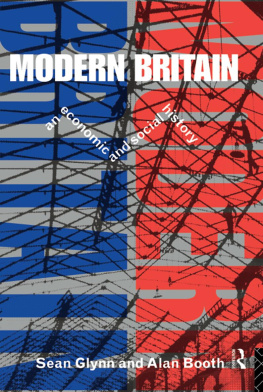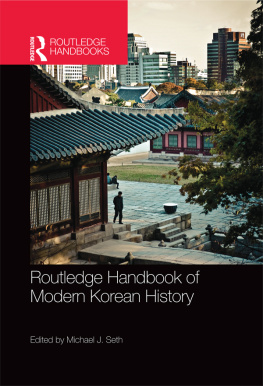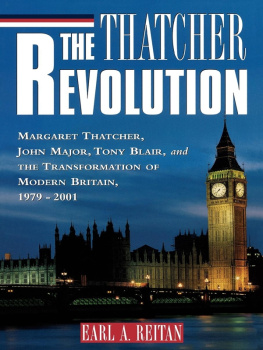
THE LONGMAN HANDBOOK OF
MODERN BRITISH HISTORY 17142001
Also by Chris Cook and John Stevenson
British Historical Facts: 17601830
The Longman Handbook of Modern European History 17631997
British Historical Facts: 16881760
The Longman Companion to Britain since 1945
Britain in the Depression: Society and Politics, 192939, 2nd edn
The Longman Handbook of the Modern World
Other books by Chris Cook
Post-war Britain: a Political History (with Alan Sked)
The Age of Alignment: Electoral Politics in Britain, 19221929
A Short History of the Liberal Party, 19001997
By-elections in British Politics (ed. with John Ramsden)
The Politics of Reappraisal, 19181939 (ed. with Gillian Peek)
The Decade of Disillusion (ed. with David McKie)
Crisis and Controversy: Essays in Honour of A. J. P. Taylor (ed. with Alan Sked)
Trade Unions in British Politics (ed. with Ben Pimlott)
The Dictionary of Historical Terms
The Facts on File World Political Almanac
The Longman Guide to Sources in Contemporary British History (2 vols with David Waller et al.)
Other books by John Stevenson
Popular Disturbances in England, 17001870, 2nd edn British Society, 19141945
Order and Disorder in Early Modern England (with A. J. Fletcher)
The Working Class and Politics in Britain and America, 19291945 (ed. with S. Salter)
Third Party Politics since 1945
The Longman Companion to the Eighteenth Century (with J. Gregory)
THE LONGMAN HANDBOOK OF
MODERN BRITISH HISTORY 17142001
Fourth Edition
Chris Cook
John Stevenson
First published 1983 by Pearson Education Limited
Second edition 1988
Third edition 1996
Fourth edition 2001
Published 2014 by Routledge
2 Park Square, Milton Park, Abingdon, Oxon OX14 4RN
711 Third Avenue, New York, NY 10017, USA
Routledge is an imprint of the Taylor & Francis Group, an informa business
Chris Cook and John Stevenson 1983, 1988, 1996, 2001
The right of Chris Cook and John Stevenson to be identified as Authors of this Work has been asserted by them in accordance with the Copyright, Designs and Patents Act 1988.
All rights reserved. No part of this book maybe reprinted or reproduced or utilised in any form or by any electronic, mechanical, or other means, now known or hereafter invented, including photocopying and recording, or in any information storage or retrieval system, without permission in writing from the publishers.
Notices
Knowledge and best practice in this field are constantly changing. As new research and experience broaden our understanding, changes in research methods, professional practices, or medical treatment may become necessary.
Practitioners and researchers must always rely on their own experience and knowledge in evaluating and using any information, methods, compounds, or experiments described herein. In using such information or methods they should be mindful of their own safety and the safety of others, including parties for whom they have a professional responsibility.
To the fullest extent of the law, neither the Publisher nor the authors, contributors, or editors, assume any liability for any injury and/or damage to persons or property as a matter of products liability, negligence or otherwise, or from any use or operation of any methods, products, instructions, or ideas contained in the material herein.
ISBN 13: 978-0-582-42394-7 (pbk)
British Library Cataloguing in Publication Data
A CIP catalogue record for this book can be obtained from the British Library
Typeset by 35 in 10/12 ITC New Baskerville
CONTENTS
This handbook has attempted to provide a convenient and accessible companion for both teachers and students of British history from 1714 to the general election of June 2001. It is a much condensed work, bringing together a wealth of chronological, statistical and tabular information which is not to be found elsewhere within the confines of a single volume. The book covers not only political and diplomatic events but also the broader fields of social and economic history. It has been designed as a handbook for use by teachers as well as by sixth-formers and undergraduates. No book of this type can be entirely comprehensive. Rather, we have included those facts, figures and statistics that we believe are most needed for courses in later modern British history.
Chris Cook
John Stevenson
June 2001
The publishers would like to thank the following for granting permission to reproduce copyright material: Routledge for the table The population of England and Wales, 16951791 ().
Mitchell and Deane, Abstract | B. R. Mitchell and P. Deane, Abstract of British Historical Statistis (Cambridge University Press, 1962) |
Mitchell and Jones,Second Abstract | B. R. Mitchell and H. G. Jones, Second Abstract of British Historical Statistics (Cambridge University Press, 1971) |
Key Data, 1992/93 | Central Statistical Office, Key Data, 1992/93 (London, HMSO, 1993) |
Annual Abstract + date | Annual Abstract of Statistics (London, HMSO, date published) |
Halsey (ed.), Trends | A. H. Halsey (ed.), Trends in British Society since 1900 (London, Macmillan, 1972) |
Britain, 1994 | Britain, 1994: An Official Handbook (London, HMSO, 1994) |
Note: (i) In order to reflect the more personal character of politics and the less organized nature of parties in the eighteenth and the first half of the nineteenth centuries, governments up to 1868 are given the name of their principal minister or ministers. After 1868 governments are designated by their party label, (ii) In the eighteenth century leaders of administrations usually held the post of First Lord of the Treasury or one of the secretaryships of state, no formal office of Prime Minister existing. From the early nineteenth century this term came into more common usage and has been adopted from the 1820s for the description of leaders of administrations.
1714
May Schism Act passed. No person allowed to keep a school unless a member of the Anglican Church.
July Henry St John (Bolingbroke) secures dismissal of the Earl of Oxford and begins attempt to pack administration with Jacobite sympathizers. Severe illness of Queen Anne forces calling of Privy Council. Pro-Hanoverian Duke of Shrewsbury appointed Lord Treasurer in place of Oxford (30th).
Aug. Death of Queen Anne (1st); George I proclaimed King in London and leading cities. Bolingbroke dismissed from office.
Sept. George I arrives in England (18th). Whig administration formed under Lord Stanhope. Principal figures: Lord Stanhope (Secretary of State); Lord Halifax (First Lord of the Treasury); Lord Townshend (Secretary of State); Earl of Nottingham (Lord President of the Council); Lord Sunderland (Lord Lieutenant of Ireland).












